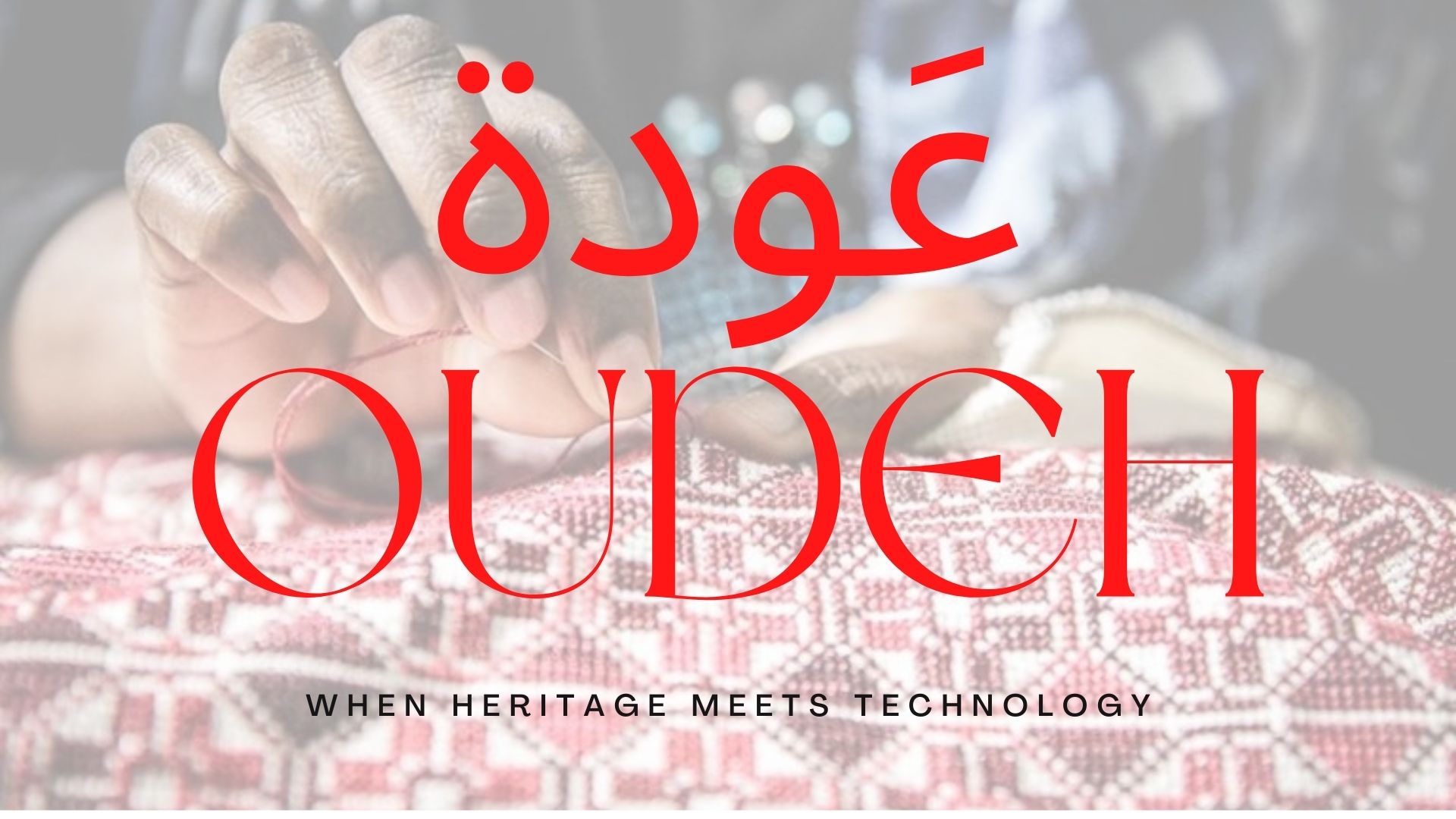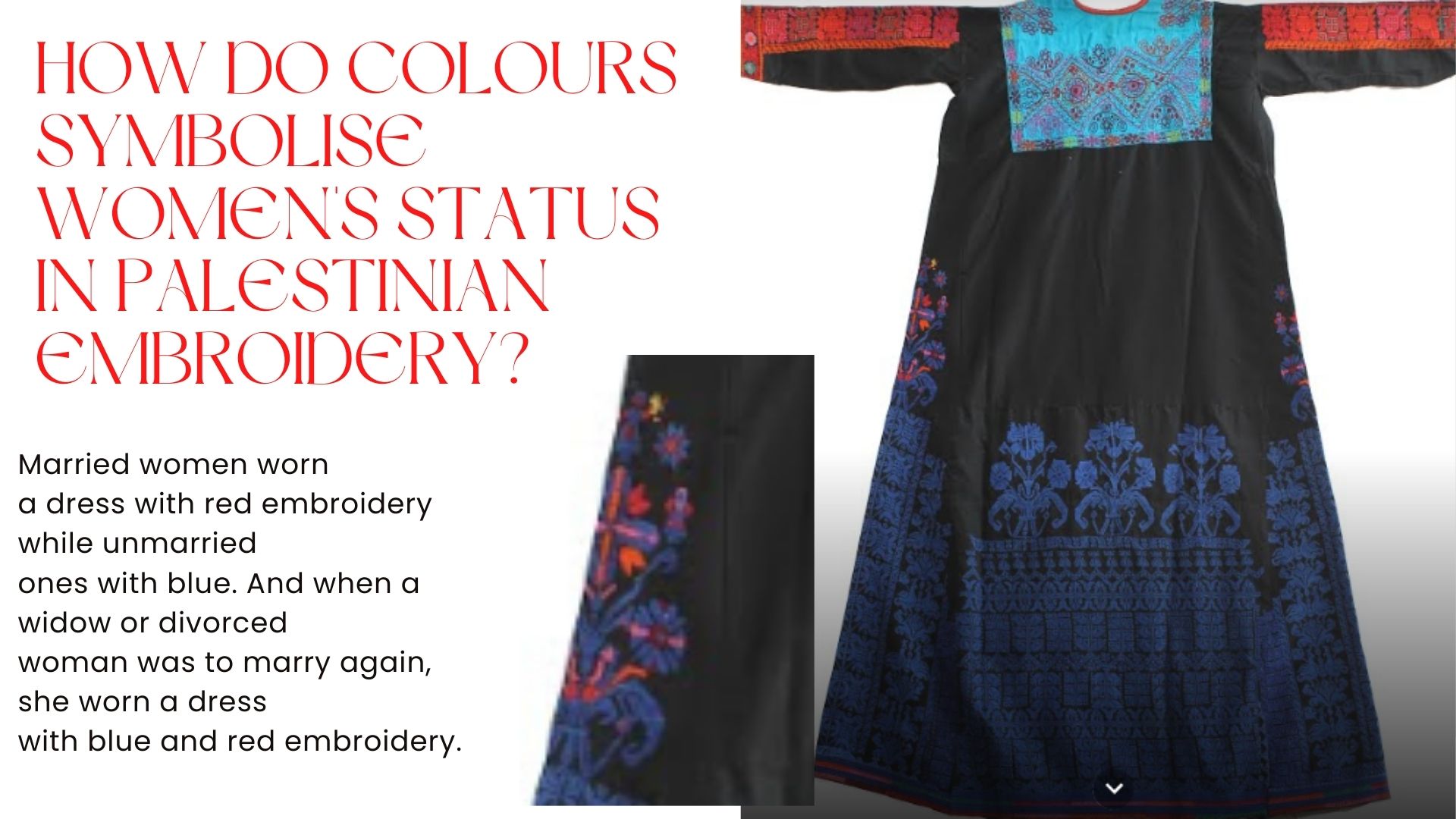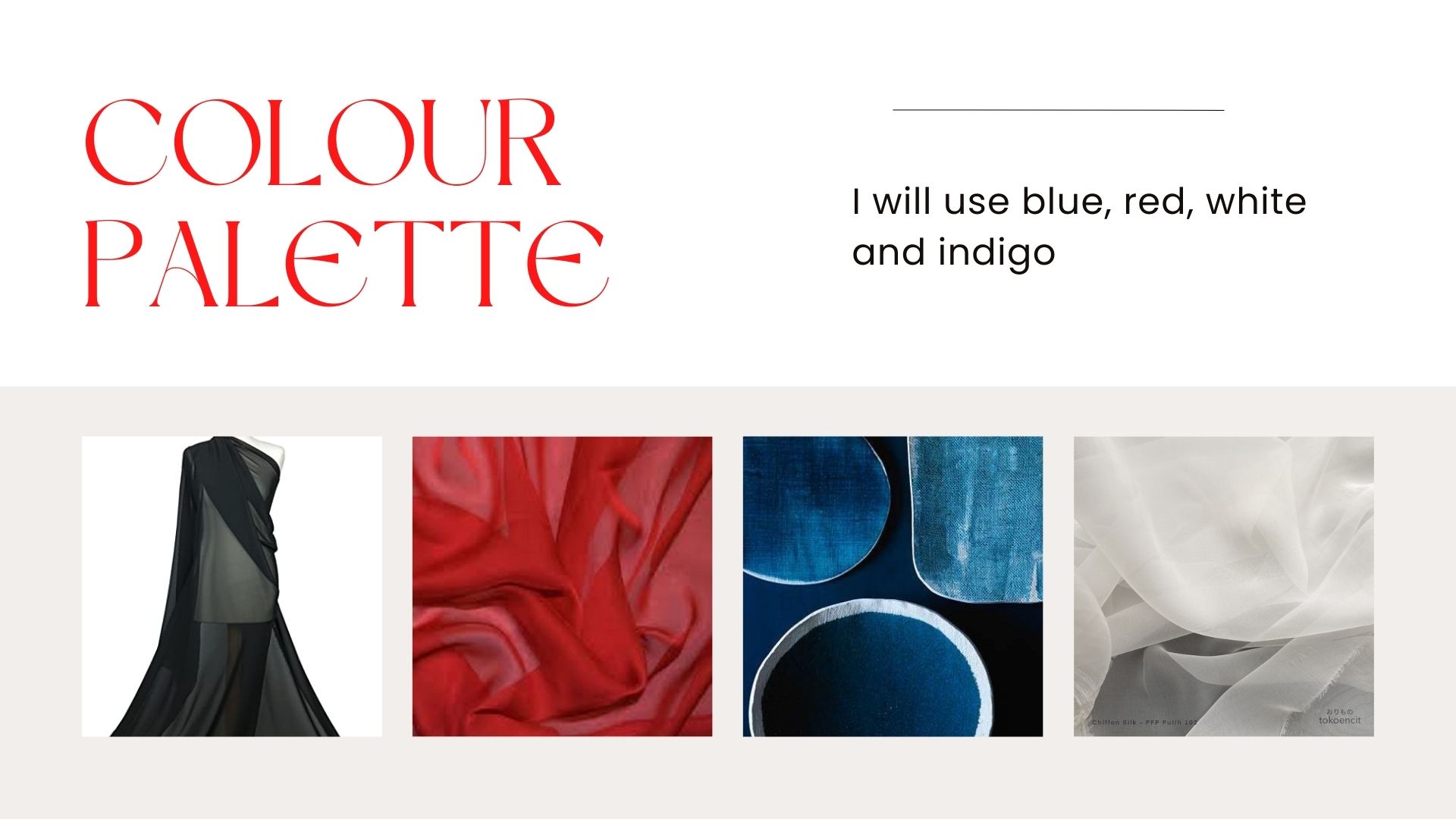
As a sustainable fashion designers I will put emphasis on circular innovation in fashion. by using recycled materials in my products, as well as upcycling fashion waste on my product lines, is imperative. Also, my project will collaborate with local projects which have their methods to reduce waste, toxicity, and environmental impact. I will design clothes that carry a story, or transform stories into designs, the products will be more than just a piece, shape, story, or technology. It will be all this and more. When heritage meets technology, it means more possibilities. It means more discoveries. It means that we gift ourselves with more beauties that we have not known or seen before.
The moodboard¶


The art of embroidery in Palestine, practices, skills, knowledge and rituals.¶
The art of traditional embroidery is widespread in Palestine. Originally made and worn in rural areas, the practice is now common in all of Palestine and among members of the diaspora. Women’s village clothing usually consists of a long dress, trousers, a jacket, a headdress and a veil. Each of these garments is embroidered with a variety of symbols including birds, trees and flowers. The choice of colours and designs indicates the woman’s regional identity and marital and economic status. On the main garment, the loose-fitting dress called a thob, the chest, sleeves and cuffs are covered with embroidery. Embroidered, vertical panels run down the dress from the waist. The embroidery is sewn with silk thread on wool, linen or cotton. Embroidery is a social and intergenerational practice, as women gather in each other’s homes to practise embroidery and sewing, often with their daughters. Many women embroider as a hobby, and some produce and sell embroidered pieces to supplement their family’s income, either on their own or in collaboration with other women. These groups gather in each other’s homes or in community centres, where they may also market their work. The practice is transmitted from mother to daughter and through formal training courses.
Colors and Materials¶

Embroidery contains a lot of lively and bright colours that express the nature surrounding them. But the most popular colours are black, red and Wheat. Indigo, a commonly found plant in the Jordan Valley, was used to produce the deep blue colour of many nineteenth and early twentieth-century dresses. The hallmark red colour of Palestinian embroidery came from the dye produced using native plants like madder and insects like kermes and cochineal. The colours will unite the collection because it contains different techniques and styles. I will use in this collection the red, black, white and indigo colours that we will get from natural indigo dyeing.
I will look for two types of fabric, one solid that we can apply geometric cuts to, and another thin and transparent such as chiffon for couture and transparent areas. The contrast in the two types of fabric will achieve the concept in this collection that combines the past, nostalgia, warmth and tenderness, and modern technology, strength and geometric shapes.
